Many of us can’t afford enthusiast-class graphics cards, but thankfully both AMD and Nvidia offer us great alternatives at lower prices. Released last year (2021), the RX 6600 XT and the RTX 3060 are great at 1080p, offer ray tracing capabilities, and can run any game currently under the sun (not on ultra). How they compare to each other is a whole other story.
In this 6600 XT vs 3060 comparison, I’ll explain why I think Nvidia did a better job with the RTX 3060 and, even with recent price drops, why I think it’s the better purchase (though it’s more expensive on average compared to the RX 6600 XT).
6600 XT vs 3060 – Quick Comparison
| RX 6600 XT | Specs | RTX 3060 |
|---|---|---|
| Navi 23 XT (215-130000006) | GPU | GA106-300-A1 |
| PCIe 4.0 x 8 | Interface | PCIe 4.0 x 16 |
| 2,048 (Streamline Processors) | CUDA Cores | 3,584 (CUDA Cores) |
| 128 | Tensor Cores | 112 |
| 32 | RT Cores | 28 |
| 1,968 MHz | Base Clock | 1,320 MHz |
| 2,589 MHz | Boost Clock | 1,777 MHz |
| 8 GB GDDR6 | Memory | 12 GB GDDR6 |
| 2,000 MHz (16 Gbps effective) | Memory Speed | 1,875 MHz (15 Gbps effective) |
| 256.0 GB/s | Bandwidth | 360.0 GB/s |
| 128 bit | Memory Bus | 192 bit |
| 160 W | TDP (Founders Edition) | 170 W |
| 450 W | Required PSU (Founders Edition) | 450 W |
| 500 W | Recommended PSU (Founders Edition) | 550 W |
| 1x HDMI 2.1, 2x DisplayPort 1.4a | Outputs | 1x HDMI 2.1, 3x DisplayPort 1.4a |
RX 6600 XT
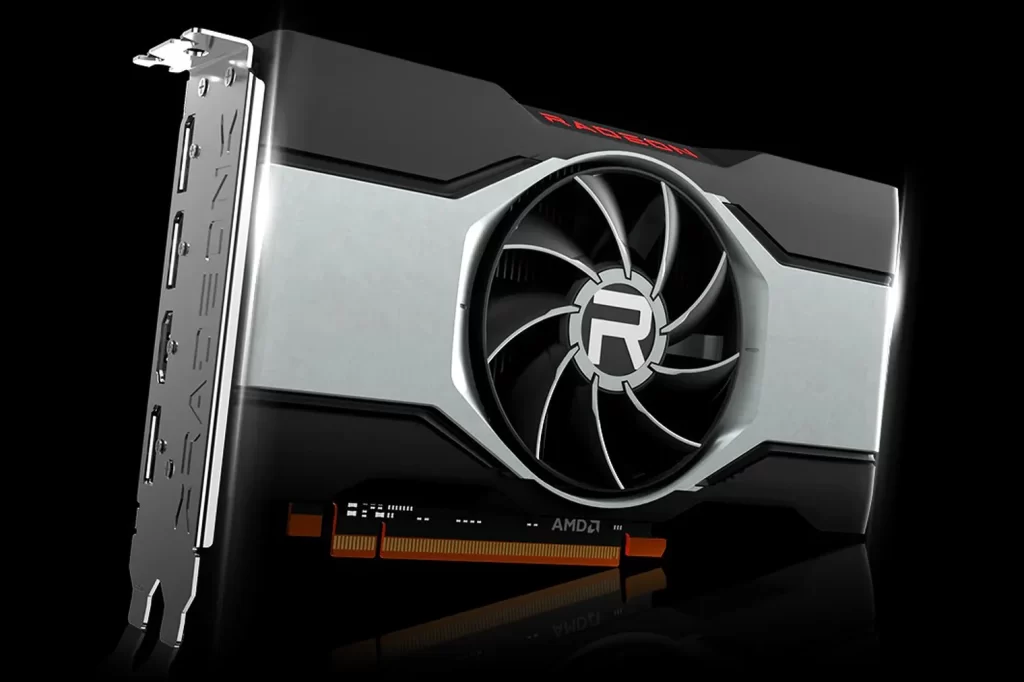
Released just over a year ago (July 30th, 2021), AMD’s Radeon RX 6600 XT was intended as a low-cost alternative for those of us who weren’t looking for (or couldn’t afford) 4K gaming. AMD has been in the business for a long time (since 1969), and they know what they’re doing. AMD is one of the leading companies in CPU and GPU development.
AMD struggled with their high-end GPUs for some time, always falling short of Nvidia, until they released the RX 6000 series based on the RDNA 2 architecture. And while its flagship card from the series could easily compare to Nvidia’s, this is not quite the case with the RX 6600 XT.
I feel like the RX 6000 series is always a step behind Nvidia because they drop their cards as if in answer to Nvidia’s releases (just a bit later and often with less to show for it). By that logic, the 6600 XT is AMD’s 1080p tier card in response to the 3060 released six months earlier.
Pros:
- Lower TDP
- Better @1080p (on average)
- Affordable
- Higher clock speeds
Cons:
- Less VRAM
- PCIe 4.0 x 8 (limiting)
RTX 3060
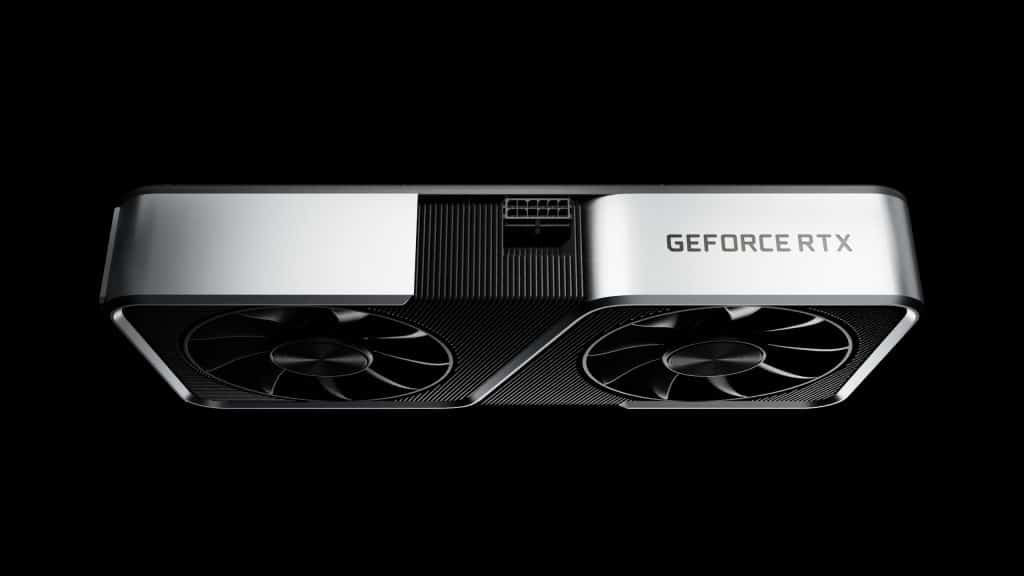
Released over a year and a half ago (January 12th, 2021), the GeForce RTX 3060 was designed for 1080p gaming, with limited 1440p capabilities. Nvidia dialed down on performance here, and the price reflected the card’s limitations. Nvidia solely focuses on GPU development and has since it started almost 30 years ago.
Nvidia successfully predicted the developments in gaming and the need for better GPU technology. That mindset has allowed Nvidia to grow into a global leader whose GPUs now power developments in AI, machine learning, robotics, self-driven vehicles, predictive medicine, and much more.
The GeForce RTX 30 series’ main focus was on 4K gaming, and Nvidia knew that many of its customers couldn’t afford everything needed to be able to play anything at 4K (GPUs, 4K monitors, CPUs, RAM, etc.), so, they tiered their offering. The RTX 3060 represents their offering for the 1080p gaming tier.
Pros:
- More VRAM
- Better @1440p (on average)
- Better ray tracing
- 75% more cores
Cons:
- Higher TDP
- Higher price
Key Specifications
Here, I’ll go through each of the most important specifications to make this a good RX 6600 XT vs RTX 3060 comparison; otherwise, I’m just farting in the wind. And as I started this comparison by stating that I held the 3060 to be the better card, I should support my claims.
Architecture
Both architectures have a lot going for them as they are both breakthrough releases compared to older GPU architectures. But what makes one stand out from the other? Keep reading to find out.
AMD’s RDNA 2
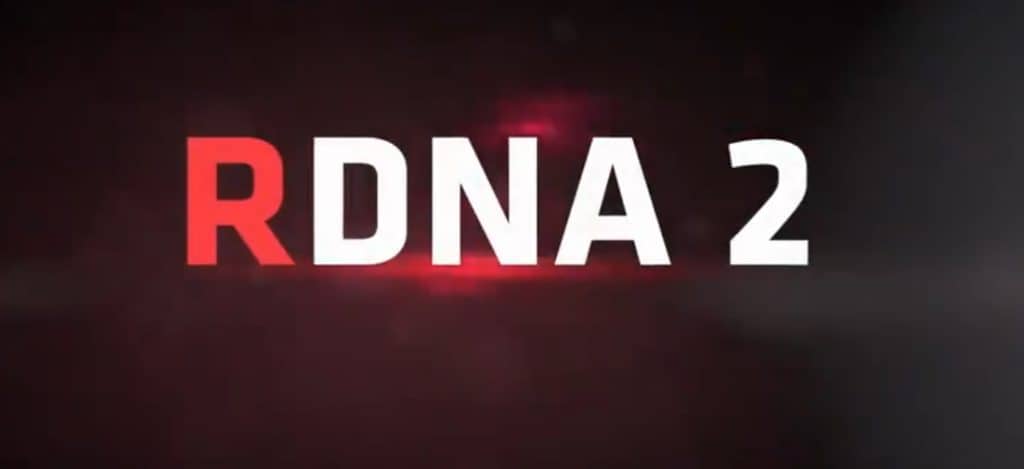
The entire RX 6000 series is based on AMD’s RDNA 2 architecture, which they (over at AMD) claim is 65% faster per watt compared to their previous architecture, RDNA (1). Claims aside, RDNA 2 is featured in both the PS5 and the XBOX Series S and X, telling me it’s top-notch. A lot was offered to us through RDNA 2, such as AMD Infinity Cache and Smart Access Memory.
Smart Access Memory was a breakthrough, and it plays an important role in this architecture. It switched the game up, allowing CPUs to access the entire GPU VRAM instead of the 256-bit blocks accessible before it. That said, we must remember that this is a 1080p-focused card, and VRAM and bandwidth aren’t that large.
AMD produces gaming-focused CPUs, GPUs, and motherboards, and if you can get your hands on an entire AMD ecosystem of components, you’re in for a blast in gaming terms.
Nvidia’s Ampere
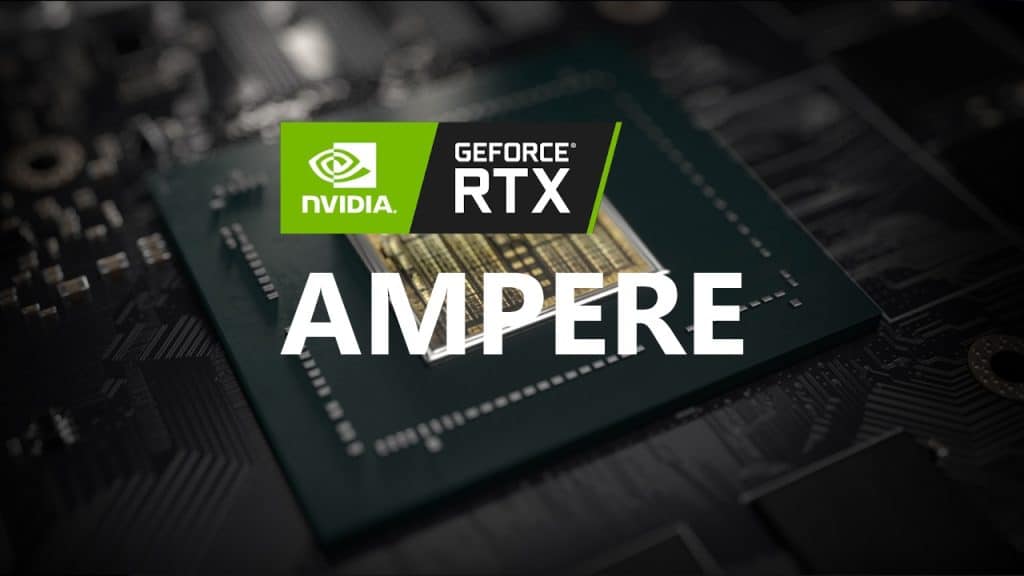
Nvidia’s Ampere is considered one of the most powerful architectures currently available to us. It was designed with more than gaming in mind, and it is the leading computational engine powering the AI revolution. Yet, the 3060 was never imagined as being the best Nvidia had to offer, and this is evident in its specs.
Nevertheless, a lot is packed into this architecture, such as second-generation consumer Ray Tracing Cores, third-generation machine learning hardware, third-generation Tensor Cores, and much more. Typically, Ampere offers a lot of power and a great gaming experience, and it doesn’t fall short of this in the RTX 3060.
Ampere, like RDNA 2, boasts a massive improvement over its predecessors, Turing and Volta. On paper, the RTX 3060’s Ampere architecture offers better results than AMD’s RDNA 2. Ampere also has some great live-streaming features built into it.
Winner: RTX 3060
Clock Speeds & Overclocking
Typically, AMD’s RX 6000 series offers higher clock speeds than Nvidia’s RTX 30 series, which is part of the reason (I think) they’re in the same ballpark at all. Clock speed is a designation of how fast GPU cores operate (the faster, the better). These speeds can be tweaked (known as overclocking) to reach higher speeds, leading to better results (in theory).
The 6600 XT has a base clock speed of 1,968 MHz and a boost clock speed of 2,589 MHz. Compared to the 3060’s base clock speed of 1,320 MHz and boost clock speed of 1,777 MHz, that’s a clear advantage. But what does that mean for you? Well, the faster your clock speed, the faster your GPU can calculate everything you need it to.
| RX 6600 XT Variants | Boost Clock | RTX 3060 | Boost Clock |
|---|---|---|---|
| ASRock RX 6600 XT Phantom Gaming D OC | 2,607 MHz | ZOTAC RTX 3060 PGF XGOC | 1,897 MHz |
| ASUS ROG STRIX RX 6600 XT GAMING OC | 2,607 MHz | ASUS ROG STRIX RTX 3060 GAMING OC | 1,882 MHz |
| Dataland RX 6600 XT X-Serial | 2,607 MHz | ASUS ROG STRIX RTX 3060 V2 GAMING OC | 1,882 MHz |
| MSI RX 6600 XT GAMING X | 2,607 MHz | EVGA RTX 3060 XC | 1,882 MHz |
| PowerColor Red Devil RX 6600 XT | 2,607 MHz | Colorful iGame RTX 3060 Advanced OC | 1,867 MHz |
Overclocking can help you reach even higher clock speeds, yet they can come at a price; the price of a new card if you’re not careful. Overclocking is best done through dedicated GPU software. AMD has its software, as does Nvidia, but both can also be overclocked using other software, such as MSI Afterburner.
My advice, if you choose to manually overclock your GPU, is to always raise fan speeds to ensure your card is cool enough to not fry itself. You can cause irreparable damage if you allow your card to overheat.
Also Read: [Complete Guide] How to Undervolt your CPU and GPU [SAFE]
Winner: RX 6600 XT
Cores
Core count is important when choosing a graphics card, but sheer counting is not enough. There are some key differences between the cores featured by AMD and Nvidia in the 6600 XT and the 3060. The first and most obvious difference is in naming — what AMD calls Streamline Processors, Nvidia calls CUDA Cores. But the differences go even further than that.
Be they Streamline processors or CUDA Cores, both are parallel processors. Your CPU might have two, four, or eight cores. GPUs have thousands of cores, 2,048 (AMD) vs 3,584 (Nvidia) in this case. So, if AMD offers higher clock speeds but fewer cores to run the calculations, we’re back to a level playing field.
Theoretically, pixel rate, texture rate, and fps are all in the 6600 XT’s favor, yet test results tell a different tale on average (we’ll get into that later).
Shaders
Shaders are generic programs that leverage the “main” GPU cores to handle aspects such as lighting and shadows, physics, certain types of anti-aliasing, and ambient occlusion. To break it down for you, they render your in-game scenery, characters, lighting, shadows, and more.
TMUs
TMUs, or Texture Mapping Units, are low-level components that handle textures in 3D spaces. As games are becoming more lifelike by the year, texture in these new HD worlds is becoming ever more important in an effort to accurately mimic our real world. TMUs generate and ensure that texture stays where it’s supposed to when you change your angle of view.
The 6600 XT offers slightly more TMUs than the RTX 3060 (128 vs 112), giving it a slight advantage in this segment but not enough to make up for the lower core count.
Ray Tracing
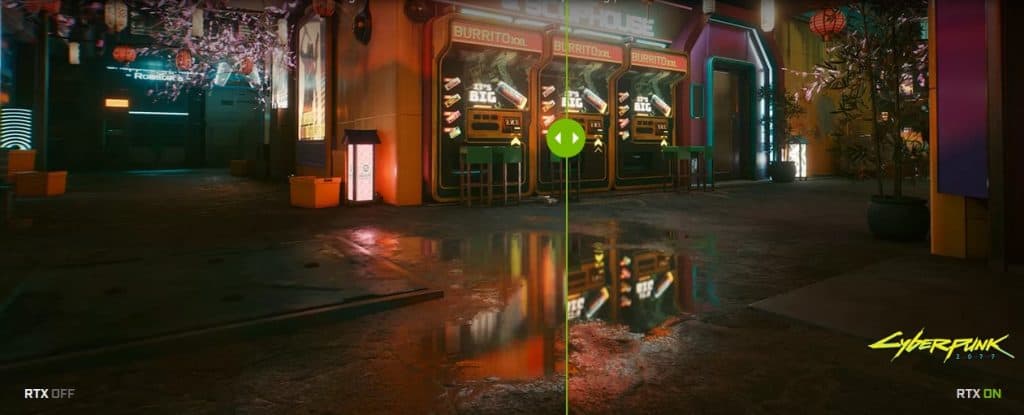
Ray tracing is still a fairly new technology that simulates how light rays act in our world, mimicking that behavior in our in-game worlds (as best it can). It takes a lot of computational power to handle ray tracing, and Nvidia has been at it since the release of the Turing architecture.
What Nvidia does differently here is that they use dedicated RT (ray tracing) Cores, whereas AMD uses Ray Tracing Accelerators (part of the main cores) to achieve the same. This means that the 6600 XT is slowed down when ray tracing is turned on, whereas the 3060 just powers up its dedicated RT cores, leaving the rest of them to conduct business as usual.
Winner: RTX 3060
VRAM & Memory Specs
Both the RX 6600 XT and the RTX 3060 use GDDR6 VRAM (we’re yet to see any GDDR 7 memory released). The difference is in the amount of VRAM, where the RTX 3060 dominates due to its 12 GB vs 8 GB featured in the RX 6600 XT. This speaks for itself, but there are other reasons why the memory subsystem of the RTX 3060 is better than that of the 6600 XT.
Another advantage of the 3060 is that it uses a full PCIe 4.0 x16 connection, while the 6600 XT uses only 8 lanes, leading to significant performance issues when the memory buffer is exceeded. The 12 GB VRAM in the RTX 3060 should be able to handle future HD texture packs better than the RX 6600 XT due to its 50% larger frame buffer.
Winner: RTX 3060
Performance and Resolutions
Both of these cards were designed for gaming at 1080p, and their performance differences (on average) are marginal. There are some games in which one does significantly better than the other, and generally, games with ray tracing are where the 3060 dominates. DLSS also helps the 3060 power ahead of the 6600.
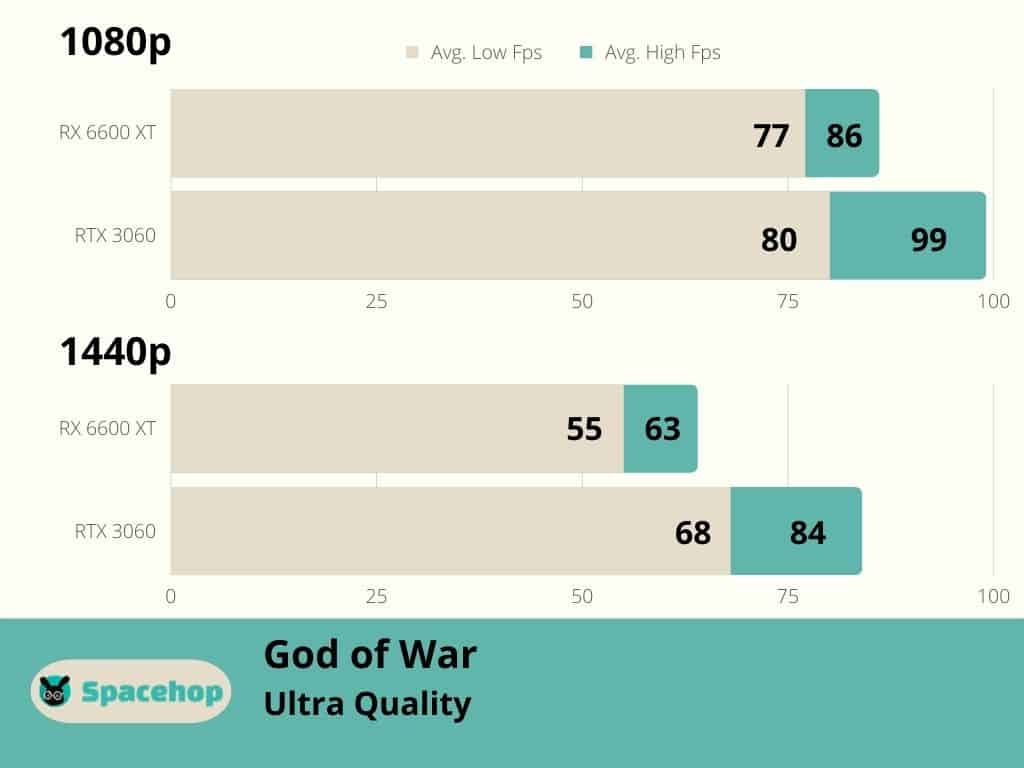
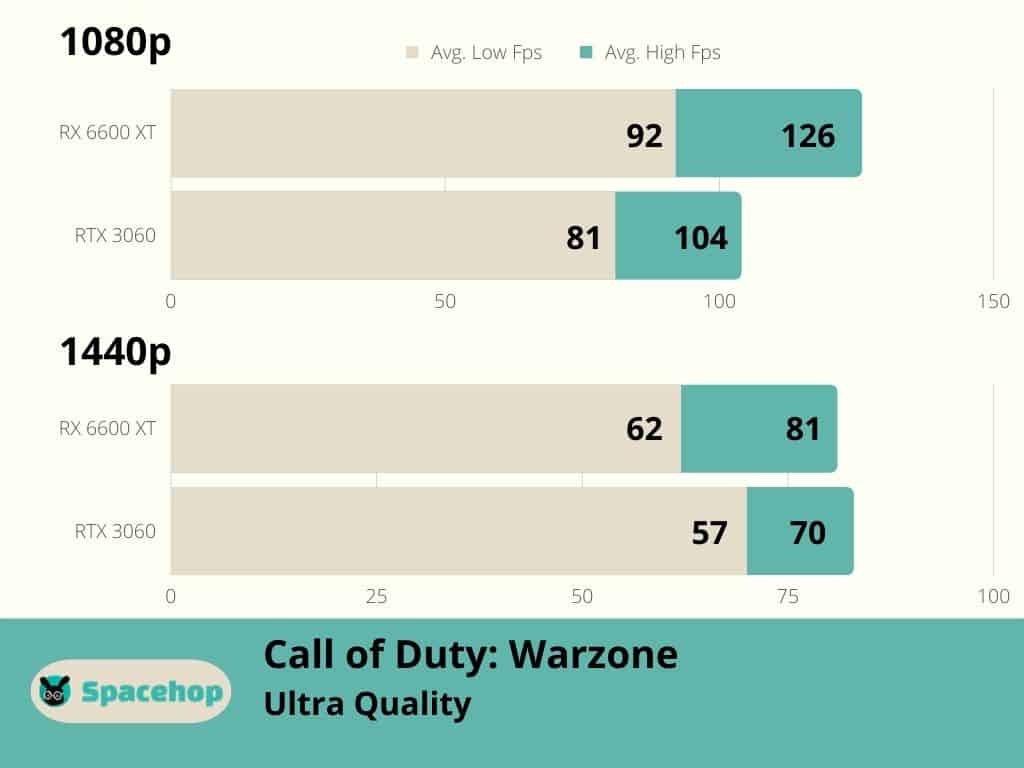
The results of 250k user tests also confirm this. The RTX 3060 has 4% better EFps during gaming but falls short in some key aspects such as MRender and when both cards are overclocked. On average, the RX 6600 XT offers 2% more Fps at 1080p. The RTX 3060 beats the 6600 XT at 1440p by 3%. Neither do well at 4K.
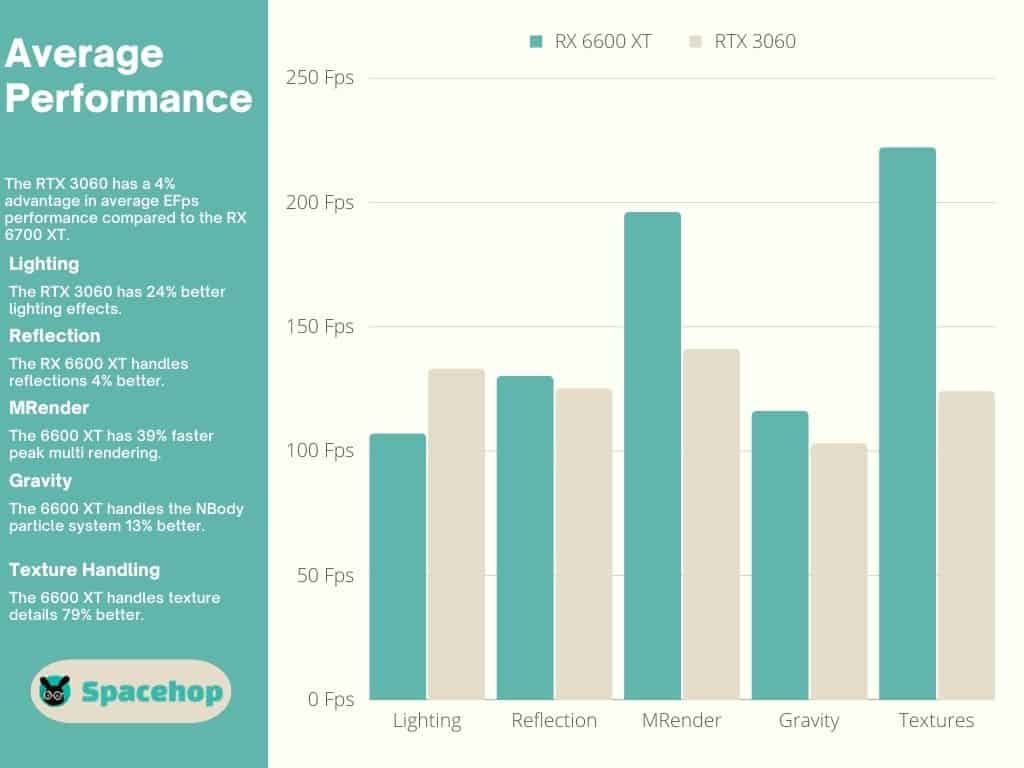
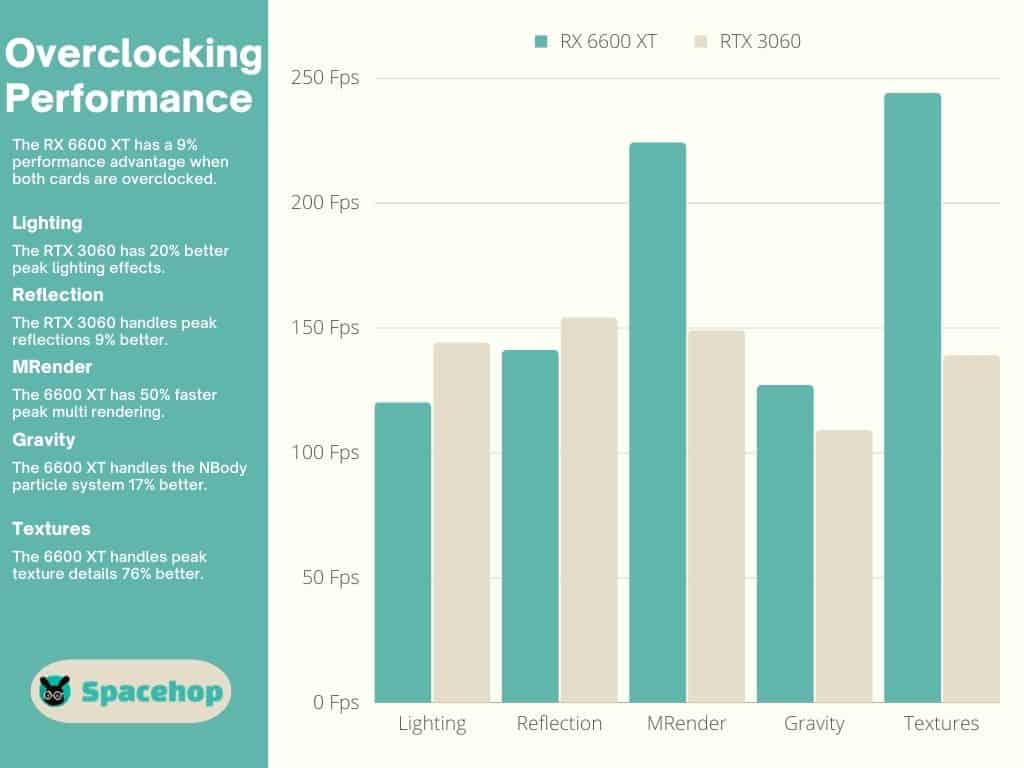
What really turns me away from the RX 6600 XT is that it has a lower performance than the RTX 2080, a card from Nvidia’s previous generation. These are not completely comparable because the RTX 2080 is almost double the price of the 6600 XT, yet it gets me thinking about how Nvidia and AMD go about their business.
Winner: Draw
Connectivity
The RX 6600 XT Founders Edition (FE) uses a standard 8-pin connector for PSU power, while the RTX 3060 uses a 12-pin connector (adaptor included), something introduced to us in the RTX 30 series. Third-party manufacturers’ cards offer different connection options, ranging from 6 to 12 pins.
On the back of the cards, you’ll find one HDMI port on each card. The 6600 XT offers two DisplayPorts for additional peripherals, while the RTX 3060 offers three DisplayPorts. A clear advantage for Nvidia.
Winner: RTX 3060
TDP
TDP (typically) refers to Thermal Design Power, which is a measurement of how much power a subsystem (such as a GPU) can draw from the PSU. It also refers to the maximum heat a subsystem is allowed to produce.
The RX 6600 XT uses slightly less power than the RTX 3060, 160 W vs. 170 W. This difference is also evident when you look at recommended PSUs for each card. Both cards require a minimum of 450 W even to power up, but the recommended PSU powers are 500 W (6600 XT) and 550 W (RTX 3060).
Temperatures are another matter as they depend on the card’s environment as much as on the card. If your airflow is all wrong within your PC case, or you lack the optimal number of fans, you’re going to get higher temperatures across all components.
The 6600 XT FE peaks at 78°C (172.4°F), but these temperatures vary significantly for third-party models due to factory overclocking, differences in fans and designs, and other factors. The RTX 3060 maxes out at 93°C (199.4°F) and drops 30°C when idle. Again, this differs with third-party cards.
Winner: RX 6600 XT
Also Read: How to Undervolt your CPU and GPU [SAFELY]
Design and Build
While temperatures impact your performance, design and build can impact temperatures. The RX 6600 XT, like every other Founders Edition card from this series, doesn’t have vents on its back side through which it could push air out of your PC case. As a result, its one fan will circulate hot air throughout your case.
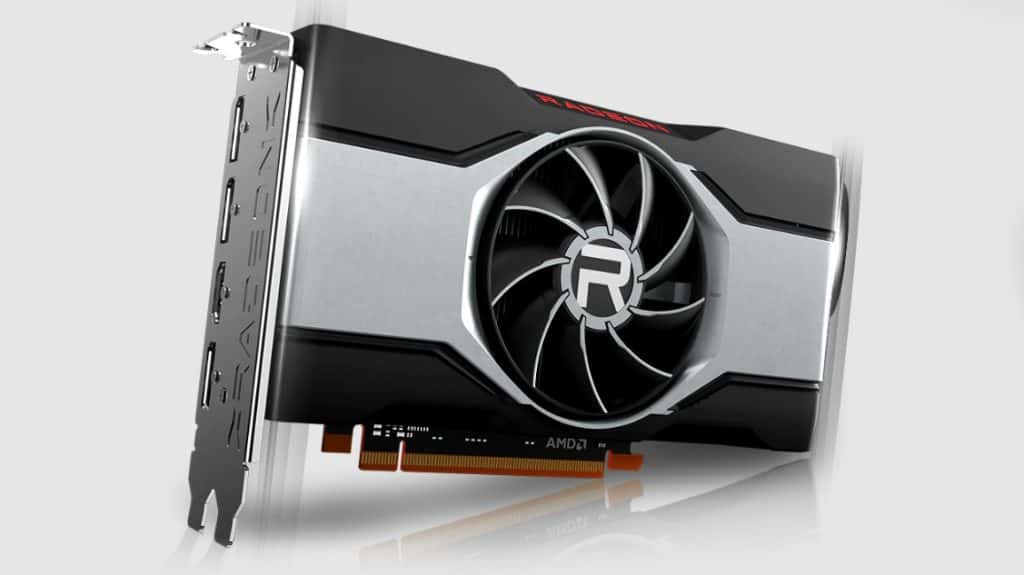
The RTX 3060, like every other RTX 30 FE card, has vents on its back side, and its two fans work to cool the card and push hot air out of your case, lowering overall temperatures. It’s a different story for third-party manufacturers’ cards, as they come in various shapes and sizes. Something to keep in mind when choosing.
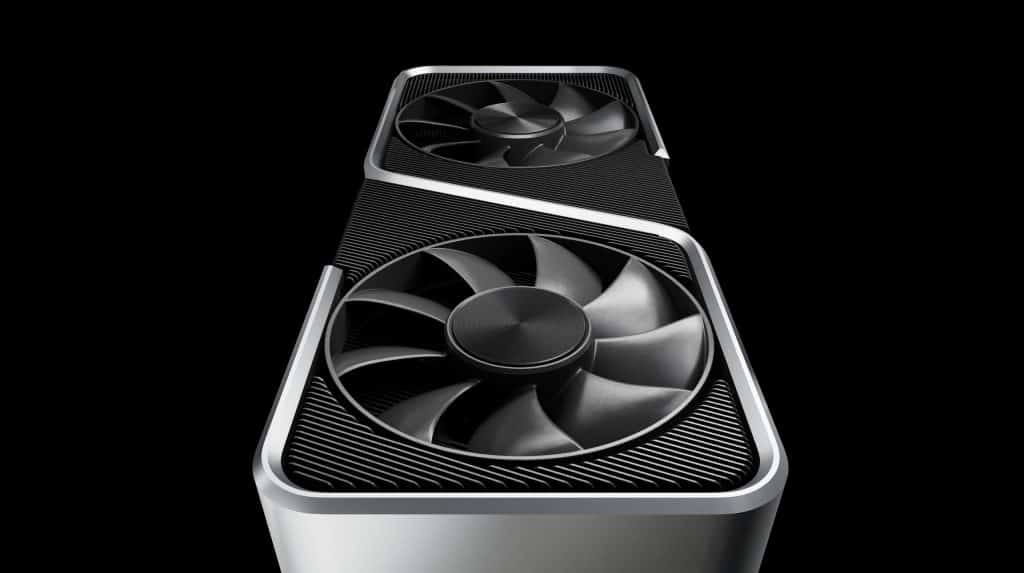
Winner: RTX 3060
Also Read: GPU Fans Not Spinning: Common causes and how to fix!
3060 vs 6600 XT – Standout Features
AMD’s SAM
Nvidia is yet to offer us a real solution like AMD’s Smart Access Memory. They say they have the tech in their cards to achieve it, but the software is still behind and requires updating your BIOS (at least). Way to go, AMD!
Nvidia’s Tensor cores
Tensor Cores dynamically adapt calculations and are designed mainly with AI development in mind. They are only included in Nvidia’s high-end products and professional GPUs (GeForce RTX series, Quadro RTX, and Titan family).
Nvidia’s RT cores
Nvidia is on its second-generation Ray Tracing Cores in the RTX 30 series. Having cores specifically dedicated to ray tracing that don’t slow down the GPU is the way to go if you ask me.
6600 XT vs 3060 – Pricing & Availability
When released, these cards went for MSRPs of $379 (RX 6600 XT) and $329 (RTX 3060). Then, we went through last year’s price jumps, fueled mostly by crypto miners (thanks a lot, guys). Recently, prices have started to drop back down. I’ve read that third-party manufacturers are having difficulty selling their AMD RX 6000 series cards to retailers.
The RX 6600 XT FE is currently unavailable, so tough luck taking advantage of price drops for that variant. But, if there is any truth to the matter, variants from MSI, ASUS, GIGABYTE, and many others are going to become even more affordable.
The same goes for the RTX 3060, as the Founders Edition is unavailable. You can find overclocked versions from ASUS, MSI, GIGABYTE, and many others. On average, they are still more expensive than the original FE’s MSRP.
Conclusion
To cut this long story short, the RTX 3060 offers very similar performance, superior ray tracing capabilities, more VRAM, and a full PCIe 4 x16 connection compared to the RX 6600 XT. That’s three to one, not counting the segments of this RX 6600 XT vs RTX 3060 comparison, in which the 3060 also won overall.
The only thing I see going for the 6600 XT is its drop in prices that will have you gaming at 1080p with much satisfaction and at a low price. Other than that, the RTX 3060 is the way to go if you ask me.
Read Next: 6600 XT vs 3060 Ti: Is there really any competition here?